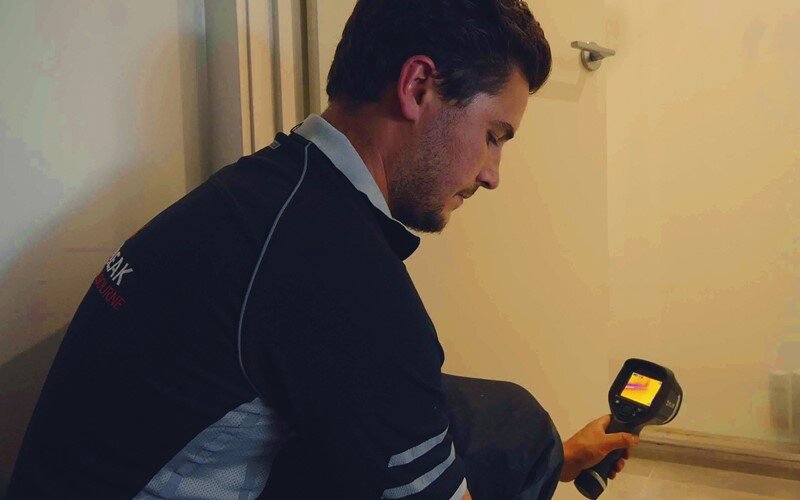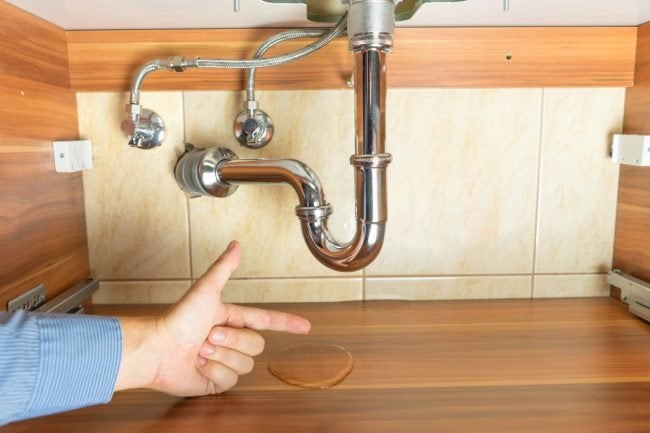6 Ways to Find Concealed Water Leakages in Your House
6 Ways to Find Concealed Water Leakages in Your House
Blog Article
Everyone is bound to have their personal assumption when it comes to Finding hidden leaks.

Early detection of dripping water lines can alleviate a possible disaster. Some small water leakages might not be noticeable.
1. Check Out the Water Meter
Every home has a water meter. Inspecting it is a surefire manner in which assists you uncover leakages. For beginners, turn off all the water sources. Make sure no person will certainly flush, make use of the tap, shower, run the cleaning device or dishwashing machine. From there, most likely to the meter as well as watch if it will alter. Considering that no person is using it, there must be no activities. If it relocates, that shows a fast-moving leakage. If you detect no modifications, wait an hour or 2 and inspect back again. This implies you may have a slow leak that can even be underground.
2. Inspect Water Consumption
Analyze your water costs and track your water consumption. As the one paying it, you ought to see if there are any inconsistencies. If you find sudden changes, in spite of your usage coinciding, it means that you have leaks in your plumbing system. Remember, your water bill should fall under the exact same variety each month. An abrupt spike in your bill indicates a fast-moving leak.
On the other hand, a stable rise monthly, even with the exact same habits, shows you have a slow-moving leak that's additionally gradually rising. Call a plumber to completely check your residential property, especially if you feel a cozy location on your flooring with piping beneath.
3. Do a Food Coloring Test
When it comes to water usage, 30% originates from commodes. Test to see if they are running appropriately. Drop flecks of food color in the storage tank and wait 10 minutes. There's a leak in between the tank as well as dish if the color somehow infiltrates your bowl during that time without flushing.
4. Asses Outside Lines
Don't fail to remember to inspect your exterior water lines as well. Must water seep out of the link, you have a loosened rubber gasket. One small leakage can throw away bunches of water and also surge your water costs.
5. Analyze the circumstance and also examine
Home owners must make it a behavior to check under the sink counters and even inside closets for any type of bad odor or mold growth. These two warnings show a leakage so prompt focus is called for. Doing regular assessments, even bi-annually, can save you from a significant issue.
Check for stainings and also deteriorating as most home appliances and pipelines have a life expectations. If you presume leaking water lines in your plumbing system, do not wait for it to rise.
Early detection of leaking water lines can mitigate a potential catastrophe. Some little water leakages may not be visible. Examining it is a surefire way that helps you find leakages. One tiny leakage can waste lots of water and also spike your water bill.
If you believe dripping water lines in your plumbing system, do not wait for it to escalate.
WARNING SIGNS OF WATER LEAKAGE BEHIND THE WALL
PERSISTENT MUSTY ODORS
As water slowly drips from a leaky pipe inside the wall, flooring and sheetrock stay damp and develop an odor similar to wet cardboard. It generates a musty smell that can help you find hidden leaks.
MOLD IN UNUSUAL AREAS
Mold usually grows in wet areas like kitchens, baths and laundry rooms. If you spot the stuff on walls or baseboards in other rooms of the house, it’s a good indicator of undetected water leaks.
STAINS THAT GROW
When mold thrives around a leaky pipe, it sometimes takes hold on the inside surface of the affected wall. A growing stain on otherwise clean sheetrock is often your sign of a hidden plumbing problem.
PEELING OR BUBBLING WALLPAPER / PAINT
This clue is easy to miss in rooms that don’t get much use. When you see wallpaper separating along seams or paint bubbling or flaking off the wall, blame sheetrock that stays wet because of an undetected leak.
BUCKLED CEILINGS AND STAINED FLOORS
If ceilings or floors in bathrooms, kitchens or laundry areas develop structural problems, don’t rule out constant damp inside the walls. Wet sheetrock can affect adjacent framing, flooring and ceilings.
https://www.servicemasterbyzaba.com/blog/how-to-detect-water-leakage-in-walls/

We had been shown that write-up about Locating water leaks from a good friend on our other website. Appreciated our blog posting? Please share it. Help other people find it. I value reading our article about Detecting hidden plumbing leaks.
Report this page